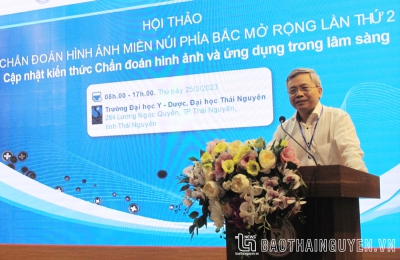Trường Đại học Y - Dược ký kết hợp tác toàn diện với bệnh viện Hữu Nghị
Chiều ngày 4/1/2024, Trường Đại học Y - Dược, nhà cái uy tin tại việt nam tổ chức Lễ ký kết hợp tác hỗ trợ y tế toàn diện với Bệnh viện Hữu Nghị.
- Thông báo tổ chức khóa đào tạo ngắn hạn "Cập nhật chẩn đoán, điều trị một số bệnh lý Nội - Nhi thường gặp; cấp cứu chấn thương và cấp cứu sản phụ khoa"
- Công nhận trúng tuyển Bác sĩ nội trú năm 2023
- Công nhận trúng tuyển sau đại học đặc thù ngành y tế đợt 2 năm 2023
- Thông báo tuyển dụng lao động hợp đồng đợt 2 năm 2023
- Đối thoại, lắng nghe để thấu hiểu, phát triển Nhà trường
Thông báo tổ chức khóa đào tạo ngắn hạn "Cập nhật chẩn đoán, điều trị một số bệnh lý Nội - Nhi thường gặp; cấp cứu chấn thương và cấp cứu sản phụ khoa"
Trường Đại học Y - Dược, nhà cái uy tin tại việt nam thông báo tổ chức khóa đào tạo ngắn hạn "Cập nhật chẩn đoán, điều trị một số bệnh lý Nội - Nhi thường gặp; cấp cứu chấn thương và cấp cứu sản phụ khoa"
Thông báo kết quả tuyển dụng lao động hợp đồng đợt 2, năm 2022
Trường Đại học Y - Dược, nhà cái uy tin tại việt nam thông báo kết quả tuyển dụng lao động hợp đồng đợt 2, năm 2022
Hội thảo chẩn đoán hình ảnh miền núi phía Bắc mở rộng
Ngày 25-3, Trường Đại học Y - Dược (nhà cái uy tin tại việt nam ) phối hợp với Hội Điện quang và Y học hạt nhân Việt Nam tổ chức Hội thảo chẩn đoán hình ảnh miền núi phía Bắc mở rộng lần thứ 2 với chủ đề “Cập nhật kiến thức chẩn đoán hình ảnh trong thực tế lâm sàng”. Tham dự Hội thảo có các nhà nghiên cứu, chuyên gia, các bác sĩ, giảng viên, cán bộ, học viên, sinh viên đang công tác, học tập trong lĩnh vực chẩn đoán hình ảnh.
Thông báo tuyển chọn sinh viên tham gia chương trình "Yonsei Global Health Leadership Course 2024"
Trường Đại học Y - Dược, nhà cái uy tin tại việt nam thông báo tuyển chọn sinh viên tham gia chương trình "Yonsei Global Health Leadership Course 2024"
- Thông báo tuyển chọn sinh viên tham gia chương trình trao đổi sinh viên với Trường Đại học Ubon Ratchathani, Thái Lan (Từ ngày 16/7/2023 đến ngày 26/7/2023)
- Trường Đại học Y - Dược, nhà cái uy tin tại việt nam tổ chức thành công Hội thảo quốc tế về chủ đề: “Bệnh lý Thần kinh - Cơ”
- Ban hành Quy định về quản lý việc ra nước ngoài của công chức, viên chức và người lao động thuộc nhà cái uy tin tại việt nam
Danh mục vị trí việc làm của Trường Đại học Y - Dược, nhà cái uy tin tại việt nam
Nghị quyết phê duyệt đề án vị trí việc làm Trường Đại học Y - Dược, nhà cái uy tin tại việt nam





.jpg)
.png)






